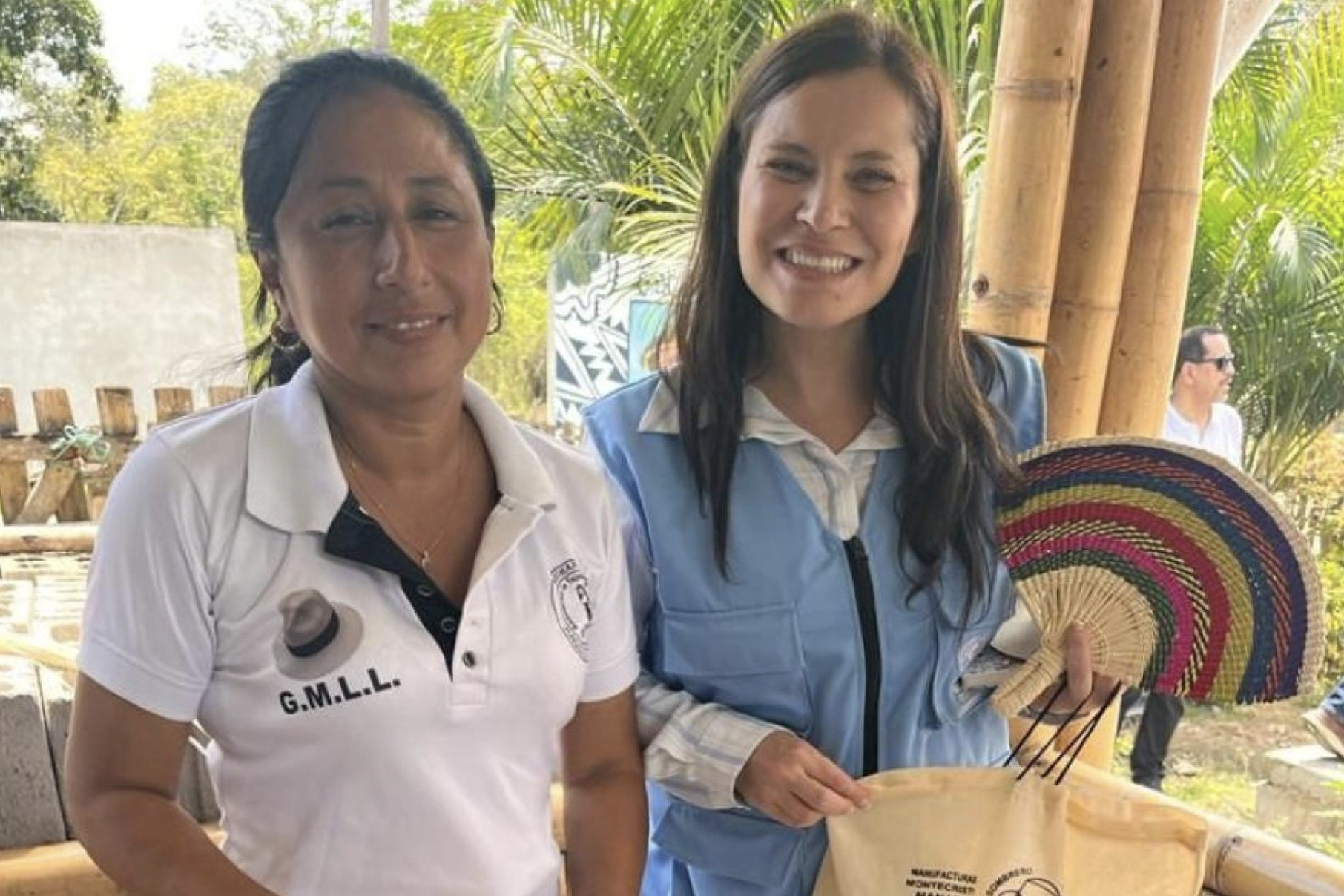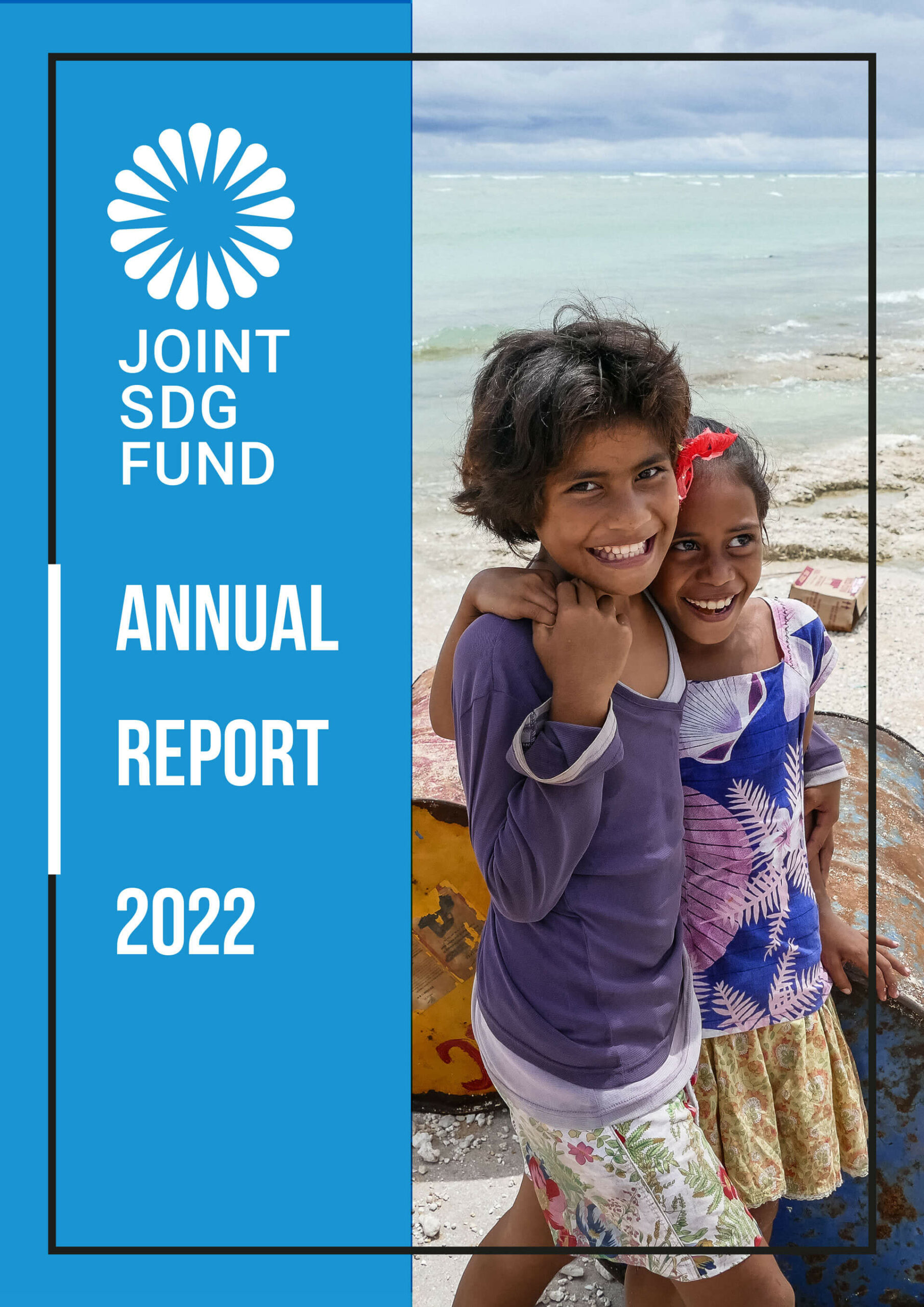The UN Resident Coordinator in Ecuador Lena Savelli visited the province of Manabi to experience first-hand the rich culture and traditions for sustainability as well as see how UN entities are working together to protect nature, ensure food security, forge livelihoods and build resilience for communities. Go along with her on a journey, with a glimpse into her diary during the visit.
The beauty of the province of Manabi is renowned throughout Ecuador. Stunning beaches, impressive rocky coastlines and breathtaking sunsets make the fourth largest and third most populous province in the country a popular vacation destination. The traditional cuisine of Manabi has been recognized as “Intangible Cultural Heritage of Ecuador” and is considered the finest in the country. The food is prepared using traditional cooking techniques such as wood-burning stoves and combines fish and seafood with a wide variety of locally sourced products.
Due to its stable climate and the topography of its soil, suitable for cultivation, Manabi is a very fertile province according to my local colleague working at the Food and Agriculture Organization (FAO). "Our agricultural production is one of the most diverse in the country. We grow coffee, cocoa, bananas, corn, rice, and fruits such as passion fruit and dragon fruit, primarily for export.”
I hear my colleague speaking as we travel from Manta, a port city and economic center of the province, to Portoviejo, the administrative capital. We are paying close attention as the landscape changes from the coastal area to the green hills of the interior.
As I learn, the generous land and sea are the cornerstone of Manabi's economy and have put the province on the world culinary map. The province has been awarded for its production of chocolate and coffee, and I cannot fail to mention its delicious Manaba cheese, which has been traditionally crafted for two centuries. But perhaps the most important product is the peanut, which has given the province its nickname "The Land of the Iches." Around 70% of Manabi dishes have peanuts as their main ingredient, such as ceviche, viche, corviche, guariche, and guanchinche. (Iche is a suffix in the ancestral language of Manabi, meaning peanut or food).
Despite the abundance of land and sea, Manabi faces a series of development challenges. Out of the population engaged in agriculture, 86% are not affiliated with the national social protection system. According to national statistics, only 36% of Manabi's 1.5 million inhabitants have access to basic services, compared to 50% nationwide. They face a lack of connectivity, adequate sewage systems, and potable water, exacerbated by high vulnerability to natural disasters. Floods, waves, and landslides regularly strike the province, and the magnitude 7.8 earthquake that shook the coast of Ecuador in 2016 had its epicenter in Manabi, claiming the lives of nearly 700 people and devastating homes, schools, and infrastructure.
Furthermore, not all Manabi residents have access to healthy nutrition. Chronic child malnutrition affects one in five children under the age of 5 and obesity rates are constantly on the rise. Even in this fertile land, some urban areas are considered "food deserts" where access to fresh produce is limited or unaffordable, given the rise in food prices caused by the pandemic and the impact of the conflict in Ukraine.
Building resilience through farming
The first stop on our tour is at Raúl's Orchard, in a peri-urban area four kilometers away from Portoviejo that aims to address this issue. With funding from the Joint SDG Fund, under the project "Prevention and Mitigation of a Potential Food Crisis in Ecuador," FAO, WFP, and ILO are supporting the development of response measures to rising food prices and agricultural inputs. UN agencies have conducted impact surveys on livelihoods and food security as part of strengthening the Ministry of Agriculture's early monitoring and alert system. They have helped build a resilience plan using an intersectoral and multilevel approach. Working with the decentralized autonomous governments, they have also strengthened planning and institutional capacities in order to establish innovative commercialization channels to strengthen urban-rural linkages.

Raúl's Orchard is now part of a network of gardens whose products are sold at the central market of Portoviejo, one of the three cities in Ecuador targeted by the project. Leveraging the fact that people, mainly women , visit the market about twice a week, the project also focuses on nutrition. Consumers can learn to prepare healthy, diverse, and sustainable dishes using traditional foods such as sweet potatoes. Additionally, at periodic Peasant Family Agriculture fairs, 450 participating producers can share their organic production practices with visitors.
During a guided tour of the garden, Giovanni, a farmer, tells us how they exclusively practice organic polyculture, 100% free of agrochemicals, to protect the environment and safeguard consumers' health. While it is a much more labour intensive and challenging practice, as it requires specific traditional expertise regarding the interaction of different plant varieties, Giovanni says that he can produce better products at a lower cost. Speaking about the impact of the UN’s support, he emphasizes that gaining access to city markets has eliminated intermediaries, making it easier and more profitable for him to do business.
Traditional crafts, tangible livelihoods
As we board the bus, the pride people feel for their province becomes clearer. Attachment to roots, customs, and culture is strong in this part of Ecuador. Our next stop, the village of Pile, is a stellar example of this. This small town, part of Montecristi, is where the finest Panama hats are produced.
We are visiting a project called "Weaving Sustainable Development," a UNESCO project funded by the French government that aims to safeguard the traditional weaving of the toquilla straw hat by strengthening the management capacities of the local weaving community. The project has supported the development of a community safeguarding plan for the craft, ensuring its alignment with the 2003 UNESCO Convention for the Safeguarding of the Intangible Cultural Heritage.

The community of Pile is now actively involved in the entire value chain of the toquilla straw hat to ensure sustainable management of the toquilla palm, following recommendations developed by FAO for the toquilla plantations in Pile. The project has promoted marketing and local economic revitalization through the acquisition of a hat press and guidance in design and innovation. Efforts have also been made to promote inclusive and transformative gender actions by strengthening women’s socio-emotional skills and productive capacities through certified courses, workshops, and interprovincial and international experience exchanges.
As we engage in a conversation with two weavers, Mariceli and Carlos, Mariceli shares that she learned the craft from her grandparents and that around 80% of the community's 1,200 residents in Pile are weavers. "It is a way of life for our community. It is our livelihood and our tradition, and we must preserve it.”
Part of the chain: sustainable fishing
I hear a similar expression of respect for traditions and sustainability later in the day, in a very different setting, about 46 kilometers away from Pile. We have returned to the coast and are sitting in the conference room of ATUNEC, the Association of Tuna Fishers of Ecuador, located in the bustling port of Manta. Here, the association’s representatives are sharing with us how they have benefited from the UNDP’s Coastal Fisheries Initiative, a project implemented with resources from the Global Environment Facility (GEF) that aims to promote ecosystem-based management and better governance of coastal fisheries in the Southeast Pacific.
Fishing is an important economic activity. Ecuador is the world’s second largest exporter of tuna and also exports corvina, sardines, sea bass, shrimp, and tilapia, with a significant portion departing from the port of Manta. Approximately 58,000 people are directly employed in this industry, but it is threatened by illegal fishing and overfishing.
Under the project, UNDP is working with partners from the private sector, civil society, national and local governments to enable seven fisheries to operate under rights-based governance and knowledge transfer processes approved by the Deputy Secretary of Fisheries Resources. The agency has supported the development of new national and provincial action plans that address key issues such as traceability and bait supply in relation to the ecosystem. Approximately 751,000 hectares of Ecuador's marine surface benefit from marine-coastal spatial planning processes.
I am moved by the words of Ricardo, a cane fisherman who practices tuna fishing with a cane and line, an ancestral practice in which tuna are individually caught rather than using fishing nets. Ricardo, who describes himself as a "member of a tuna fishing family since childhood," says, "We have to take care of the ocean because it is the ocean that will continue to feed us and our children. We are just a piece of the value chain." Fishing with cane and line is considered a more sustainable and responsible practice as it reduces the bycatch of sharks, turtles, and other larger marine animals.
The cane fishermen of Manta have even received international Fair-Trade certification, which assures consumers that a product meets social, economic, and environmental standards. Thanks to the UNDP project, Ricardo and his colleagues can continue practicing this ancient skill, ensuring their livelihood while living in harmony with nature.

Safeguarding traditions for a sustainable future
From our visits, I feel encouraged and proud of how the UN is playing an active role in Manabi, working closely with local authorities to safeguard the knowledge and ancestral traditions of the province and creating connections, bringing together the most diverse set of actors to address specific development, protection, or humanitarian challenges.
As we conclude a long day of visits, I feel inspired by the beauty, ingenuity, and culture of Manabi and its people and committed to continuing supporting the coordinated work among UN agencies in the country, in close collaboration with local authorities, and making connections with all our partners. All to promote a better future for the people and nature of Manabi, and in line with the ancient traditions of the Land of the Iches.
This article is an abridged translated version. Please read the full piece in Spanish here. For more information about the UN’s work in Ecuador, please visit ecuador.un.org.



















